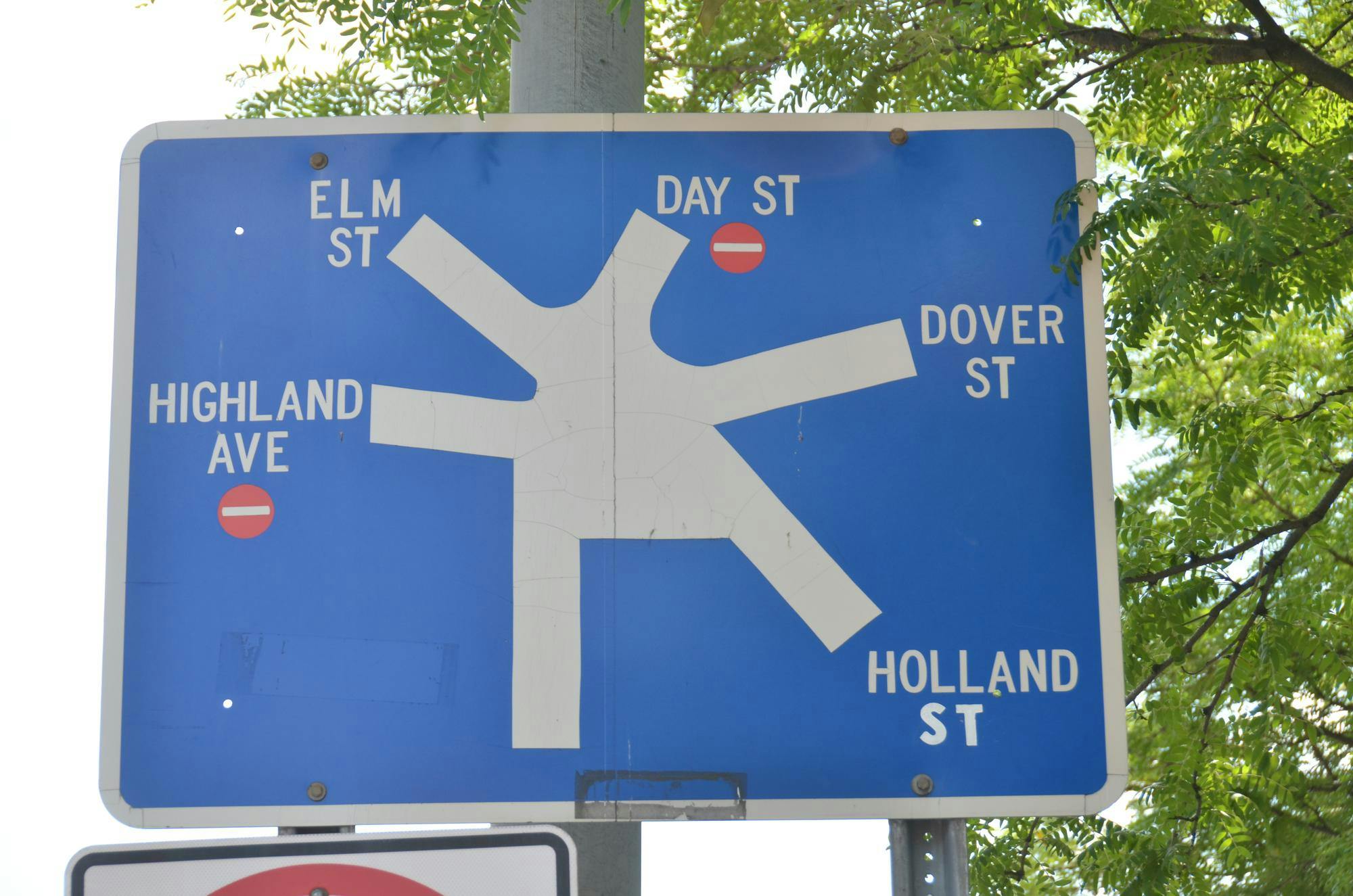Community members gathered at the Somerville Public Library West Branch on Jan. 29 to critique an updated commercial area plan for Davis Square. Somerville city planners shared their progress on their plan to redesign Davis Square’s commercial core, then opened the floor to local residents for feedback.
Efforts like this one have been in the works for over 11 years, but rather than focusing on improving the neighborhood as a whole, this new plan takes specific aim at Davis Square.
According to Sarah Lewis, the director of planning, preservation and zoning for the City of Somerville, this change was due to public feedback.
“When we realized most of the comments that we had received on that draft were about the public realm — it was less about the residential portion of the neighborhood itself, it was all about the heart of the square — that’s when we decided to focus on what we call a small area plan,” she said.
Lewis kickstarted the meeting with a presentation on the plan’s main recommendations, organized into three main categories: mobility, civic space and economic development. Some of the proposals include prioritizing mass transit, encouraging the use of electric vehicles, improving commercial loading and unloading zones, improving parking, installing better streetscape such as art and trees, redesigning Davis Plaza, pedestrianizing Elm Street and redeveloping a parking lot into a permanent public market.
One of residents’ primary concerns addressed at the meeting was the pedestrianization of Elm Street, which runs directly through Davis Square. From the perspective of a city planner, Lewis shared that the pandemic significantly changed her view of the feasibility of such a project.
“Previously … it seemed a little bold [and] everybody got a little nervous,” Lewis said during the meeting. “But then COVID distancing requirements required outdoor dining to help support our local restaurants and businesses. … So this function[ed] as a pilot program for narrowing the actual roadway. It was an opportunity so what was a far-fetched idea, all of a sudden, didn’t seem quite so outlandish.”
Stephanie Galaitsi, a Somerville resident, is a proponent of making Elm Street pedestrians and bicycles only.
“A pedestrianized area is really the best possible outcome for Somerville to create a community and to have this place where people can interact safely,” she said.
However, other residents view the pedestrianization of Elm Street to have other potentially significant consequences, such as the loss of parking. Paul Christie, a Somerville resident and the owner of a small gift shop in Davis Square, was concerned that if Elm Street were to be closed to cars, traffic would simply be dispersed to other surrounding areas including the street on which he lives.
Many people were also concerned about the plan’s purported mission to improve safety and increase accessibility, with some taking specific issue with the maintenance of Davis Square’s brick sidewalks.
“We don’t consider the needs of our disabled community members,” one attendee said. “The fact that we’re talking about bricks and the aesthetics of bricks is crazy to me. … While this is planned for safety, or the convenience of some, it has significantly increased the danger for many members of our community. And those are the members who are not likely to come to this meeting, are not likely to email, and so, if we’re going to talk about equality, we really need to do equity and listen to everybody.”
This sentiment was shared by many other community members, who expressed concern that the agenda for the beautification of Davis Square clashed with the agenda to make the space accessible.
“You’re talking about holding onto the bricks because it reminds people of old Davis Square, but the people who made Davis Square, and have been there for years — just try to hold on to them too,” another attendee said.
The sentiment was shared by Galaitsi, who volunteers for the Somerville Alliance for Safe Streets. According to Galaitsi, while removing some of the brick in Davis Square may seem like an improvement in accessibility for people with wheelchairs, “[by] leaving it in the places where you want people to hang out and linger. … What does that say to people in wheelchairs? That they can pass through, but they can’t stay? … I personally think that making sure that the space is welcoming for everybody is more important.”
In addition to feedback on specific details of the plan, attendees expressed concerns about the overall communication between the city and business owners.
Christie — who owns businesses in both Davis Square and Arlington Center — shared that in Arlington, business owners meet monthly with city planners. This is a practice he believes would be beneficial in Somerville.
“I think that regular discourse between the city and the merchants helps defuse any resentments when it comes to surprises due to lack of communication,” he said. “A lot of people feel that the city doesn't communicate with them well enough about plans that are happening.”
Christie did acknowledge that this meeting was a positive step in opening up better lines of communication.
“It makes me glad that it’s a plan and it’s not concrete,” he said. “I think this is a wonderful jumping off point for us to engage in talks with the city.”
To that end, Christie is currently organizing business owners in Davis Square to join together and meet with Somerville city representatives, in hopes of establishing regular communication between the major stakeholders in the plan.
Going forward, the planning team will be coordinating with other divisions to implement the feedback they received at the community meeting. There is no predicted timeline for the plan’s changes.






